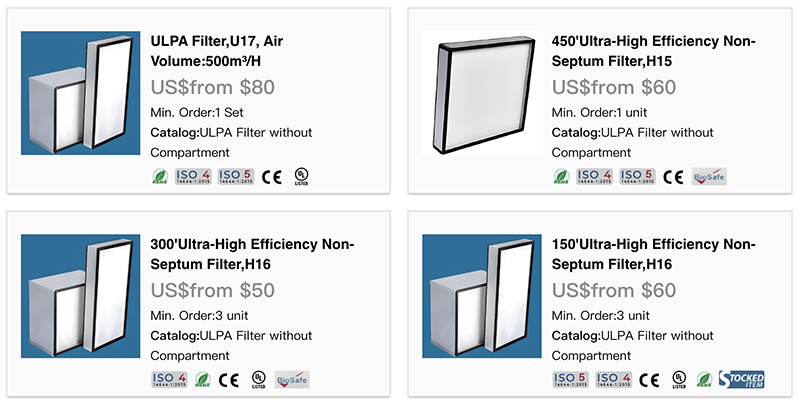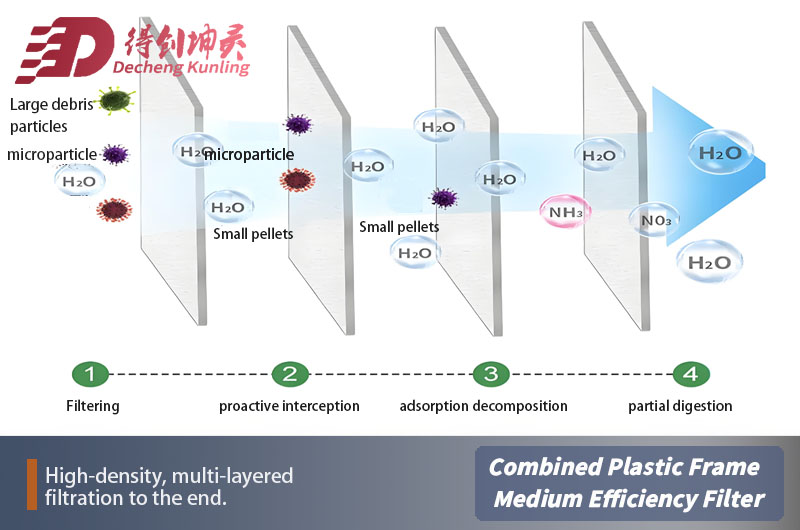hepa (High-Efficiency Particulate Air) filters are integral to maintaining air quality in environments where cleanliness is critical, such as laboratories and Cleanrooms.Understanding the types of hepa filters available can help industries choose the right solution for their specific needs.This article explores the different types of hepa filters categorized by function, structure, and filtration efficiency, with insights from Deiiang™ and product designer Deiiang Jason.peng.
Function-Based Classification
HEPA filters are designed to meet various functional requirements based on the conditions in which they operate:
- High-Temperature Resistant Filters: These filters are used in environments where temperatures approach extreme levels, such as in certain manufacturing processes. They maintain structural integrity and filtration efficiency even at high temperatures, often constructed using materials that can withstand thermal stress.
- Activated Carbon Filters: In addition to particulate filtration, these filters incorporate activated carbon to adsorb gases and odors.They are particularly useful in environments where chemical processes release hazardous vapors, such as in pharmaceutical production.
Structure-Based Classification
The structural design of a HEPA filter can affect its performance and suitability for different applications:
- Gel Seal (Liquid Seal) Type: These filters provide an airtight seal, preventing any bypass of unfiltered air. This is crucial in highly controlled environments where even a slight leakage can affect results.
- Separator HEPA Filters: These incorporate separators between pleats of filter media, ensuring consistent airflow and structural stability. This design is particularly effective in maintaining high airflow rates and is often used in industrial applications.
- Compact (Pleat Pack) HEPA Filters: Also known as mini-pleat filters, they maximize surface area for air passage while minimizing the overall filter size. This construction is beneficial where space constraints are an issue, such as in compact HVAC systems.
Filtration Efficiency Classification
The efficiency of HEPA filters is categorized by their ability to remove particles, aligned with international standards such as EN 1822:
| Filter Type | Efficiency | Typical Applications |
|---|---|---|
| H13 Filters | 99.95% of 0.3 micron particles | General high-efficiency applications |
| H14 Filters | 99.995% of 0.3 micron particles | Hospitals, research labs |
| U15 Filters | 99.9995% of 0.3 micron particles | Semiconductor cleanrooms |
| U16 Filters | 99.99995% of 0.3 micron particles | Biotechnology, pharmaceutical |
| U17 Filters | 99.999995% of 0.3 micron particles | Sterile manufacturing environments |

HEPA Filter Example

HEPA Filter Structure
Conclusion: Selecting the Right HEPA Filter
Choosing the appropriate HEPA filter involves understanding the specific requirements of your operational environment. Whether prioritizing high-temperature resistance, specific structural features, or filtration efficiency, each type serves a unique purpose. Deiiang™, under the guidance of Deiiang Jason.peng, continues to innovate in the field of air filtration technology, providing solutions tailored to the diverse needs of industries worldwide.
Common Questions and Solutions
What is the difference between H13 and H14 filters?
H14 filters offer a higher filtration efficiency than H13, capturing a higher percentage of particles at 0.3 microns, crucial for more controlled environments.
Can activated carbon HEPA filters remove odors?
Yes, they are specifically designed to adsorb gaseous pollutants and odors, in addition to particulate matter.
References
- International Organization for Standardization. (2019). ISO 29463 – High-efficiency filters and filter media for removing particles from air.
- Deiiang™, Product Design Insights by Deiiang Jason.peng.
By understanding these classifications and their applications, industries can optimize air quality, ensuring safety and compliance in their clean environments.
 +86 18186671616
+86 18186671616 Jason@cleanroomequips.com
Jason@cleanroomequips.com
 MENU
MENU


